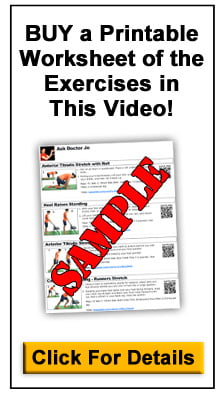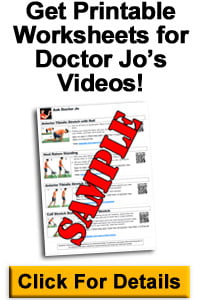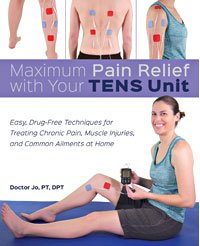 Product Placement: Thank you to InkPixi for sending me the free Super Jo T-shirt to wear.
Product Placement: Thank you to InkPixi for sending me the free Super Jo T-shirt to wear.
This full body stretching routine is great for general wellness, flexibility, and pain relief. This real-time video will give you a relaxing whole body stretch from your head down to your toes. Click here for a shorter version of this routine.
Each stretch should be held or done for 30 seconds.
You should always start a stretch routine with a 2-3 minute warm up getting the large muscle groups warmed up to be stretched. This should be done for both the arms and legs.
To start off with the neck, you will do neck circles, an upper trap stretch, and chin tucks. These should not only help loosen up the neck muscles, but it should also help with your posture as well.
For the shoulder, you will do a posterior capsular stretch, chest stretch, tricep stretch, and an arm horizontal abduction stretch. These help stretch the shoulder area as well as open up the chest area.
Now for the upper back and thoracic area. A seated roll down, thoracic rotation, and thoracic side bend can help loosen up the upper back, and it can also help relief upper back spasms.
Next, get down on the floor for some hip and knee stretches. A butterfly stretch is great for the groin muscles. A hamstring stretch, IT band stretch, and quad stretch are great for the hips and knees. The calf stretch, soleus stretch, and anterior tibialis stretch are good stretches for the knees and ankles.
The last few stretches are more of a cool down for the whole body. Make sure you are focusing on your breathing while doing these. The cat/dog stretch, prayer stretch (child’s pose), and full body extension stretch will help bring your heart rate back down and get you ready for the day.
Related Videos:
You may also like













